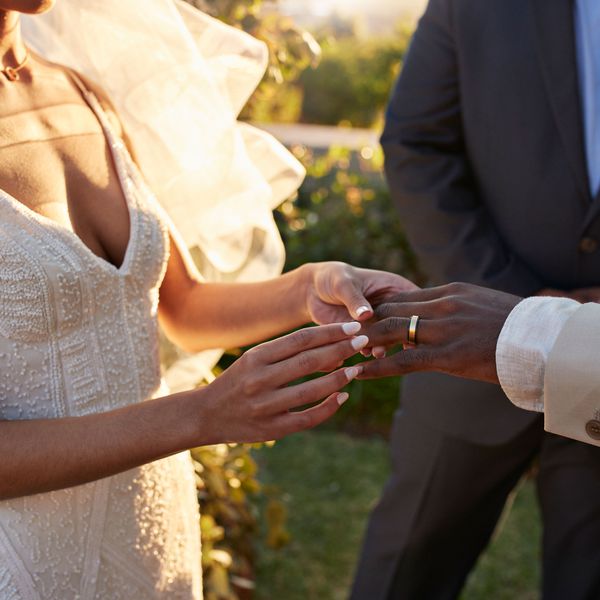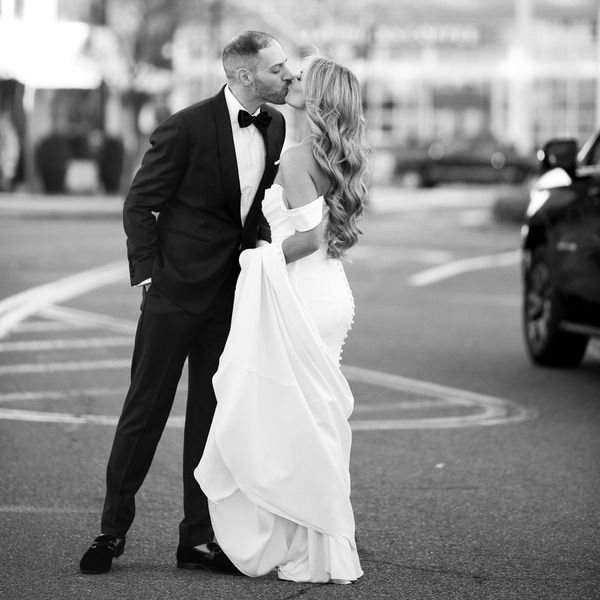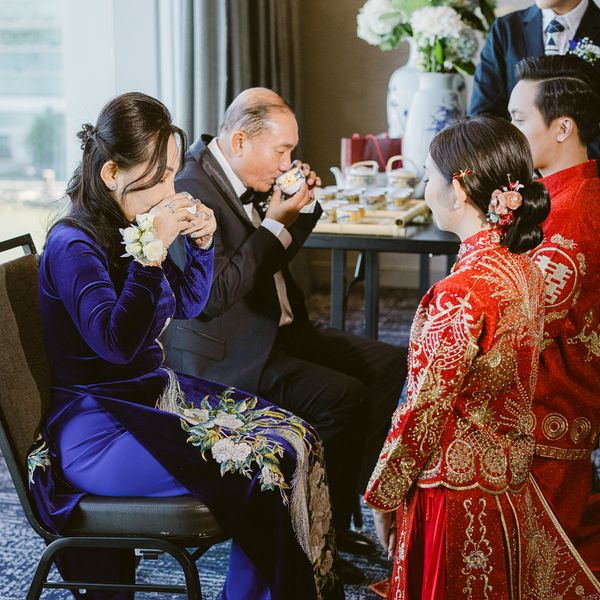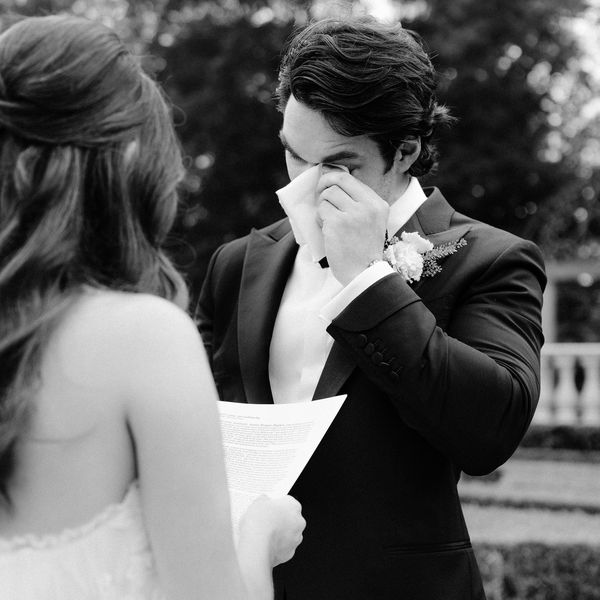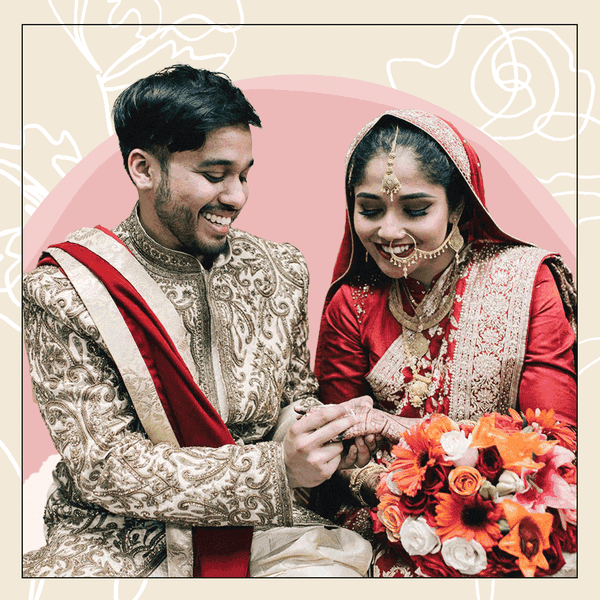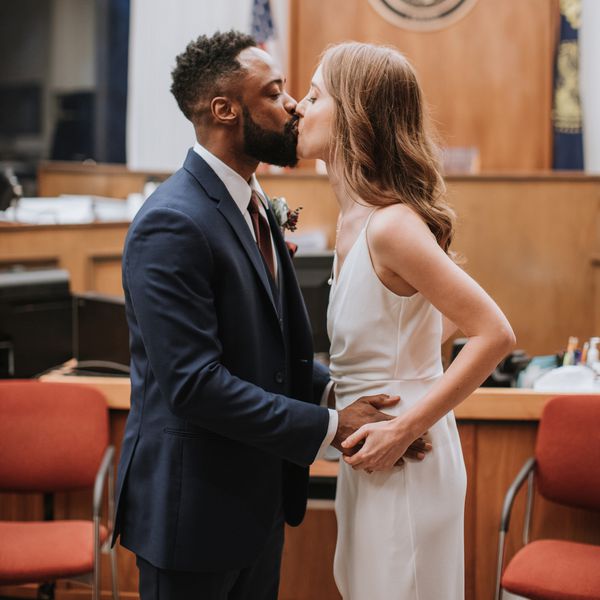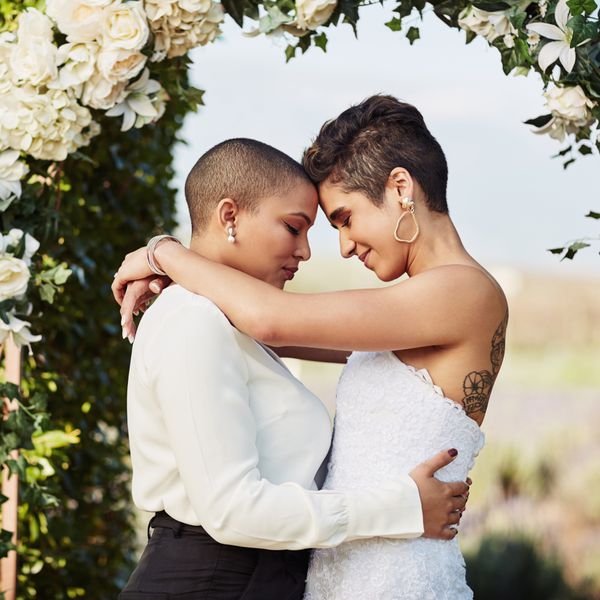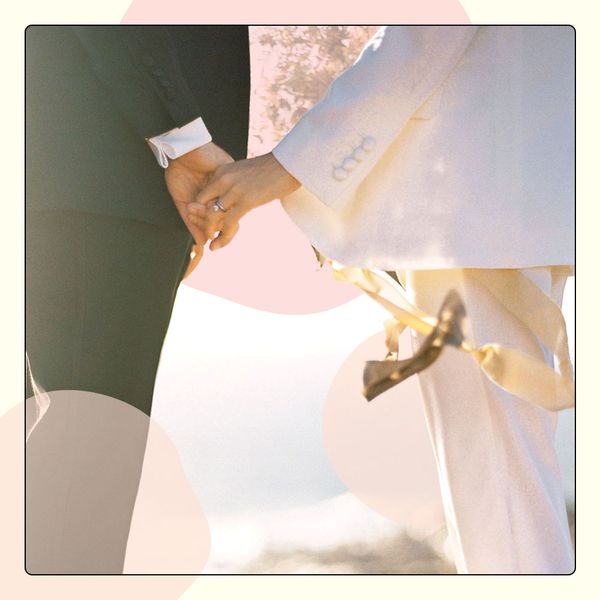:max_bytes(150000):strip_icc()/ketubah-signing-recirc-stephanie-sunderland-72ae5e130ca549169ace77a591a820d2.jpg)
Photo by Stephanie Sunderland
Jewish weddings are filled with many meaningful traditions, and one of the most important rituals is the ketubah signing. During this religious custom, which often takes place shortly before the wedding ceremony, witnesses sign the ketubah, or Jewish marriage contract, which validates the couple's marriage. Functioning similarly to vows, the ketubah contains stipulations about what the future newlyweds will provide to one another throughout their marriage. While the traditional text outlines the husband's financial obligations to his wife, many modern couples choose to either write their own ketubah or purchase one with words that better suit their relationship.
Meet the Expert
Rabbi Sarah Newmark is an officiant for Jewish weddings in the Pacific Northwest and beyond. She launched her eponymous business in 1993.
Whether you intend to stick with the ancient text or adjust the written word, you might be wondering how to organize this pre-ceremony ritual, like where to get this document and how to customize it. You may also be asking yourself what this Jewish wedding tradition actually entails, including who participates in the signing and where and when it takes place. To answer all of your pressing questions about this significant custom, we tapped Rabbi Sarah Newmark, who offers officiant services for Jewish weddings. Here, she discusses the meaning and history of the ketubah signing and all of the logistics involved in the ritual—for both traditional and modern practices.
Read on to learn all about the ketubah signing.
The History of the Ketubah Signing
The ketubah signing is a longstanding tradition that has been an essential part of Jewish weddings for more than 2,000 years. While the contract is mentioned in the Bible, specifically stipulating how much a groom’s family would have to pay the bride’s family upon marriage, the earliest surviving ketubah, written in Aramic, is from 440 B.C.E. According to Newmark, the text first became standardized in first century CE.
The Meaning of the Ketubah Signing
In modern times, the text still remains the same in Orthodox communities. Much like a prenuptial agreement, the traditional document lays out a husband's obligations to his wife, plus what a wife gets if there is a divorce or death. "The ketubah was actually a document that protected women from being abandoned by their husbands or being forced into a divorce they did not want, as it provided for a woman's financial wellbeing should a marriage dissolve," Newmark explains.
For more contemporary Jewish weddings, though, the writing usually includes more egalitarian, relationship-focused words that the couple either composes themselves (written in Hebrew with an English translation) or purchases from another source. “Couples choose or create a ketubah text, which describes the values on which their marriage is to be based,” Newmark says. “These texts often include words of love and promise.”
:max_bytes(150000):strip_icc()/Robbie-Tim_11-ef1bbac1cee242c987807525855b9c04.jpg)
Photo by Blue Note Weddings
What to Know About the Ketubah Signing
Still have questions about the ketubah signing? We've got all of the answers below.
What does the ketubah say?
The ketubah lists all of the details of the wedding, such as the date, the name of the to-be-weds, and more. In traditional communities, who use the ancient text, the contract lists the groom's financial and conjugal responsibilities to the bride. It also discusses what should happen in the case of a divorce or untimely death. Meanwhile, in modern practices, the newlyweds determine what the two of them will provide to one another during their marriage, similar to vows.
How do you write your own ketubah?
If you won't be signing the traditional document, you're free to write your own words. Some couples include their vows in the marriage contract, while others incorporate poetry or song. Different denominations have their own set of rules for the ketubah, so it’s important to check with your rabbi or officiant about the specific requirements.
What if you don't want to use the traditional text or write your own?
There are now numerous versions of the ketubah, like ones that are written in multiple languages and ones specifically designed for interfaith or same-sex couples. You can find these on websites that sell ketubahs.
How do you purchase a ketubah?
Many websites sell ketubahs—in fact, most couples purchase their ketubahs online. Some of the most popular options, according to Newmark, are ketubah.com, Etsy, or an independent artist's website (which you can find by doing a simple online search). For those who want a custom, original piece, Newmark advises hiring a ketubah artist to design and hand-calligraph yours. If you're ordering from an artist, Newmark mentions that you'll need to buy an archival pen (which doesn't smear or fade), too.
What kind of artwork is acceptable for a ketubah?
While a ketubah is technically a legal document, there's nothing wrong with making it visually appealing—especially since it will be on display during your wedding ceremony and likely in your home. Usually, the text is centered in the middle of the document, either shaped in a square, circular, or abstract format, and designs surround the text. Ketubahs with paper-cut elements are a popular choice with couples, as are trees, birds, flowers and other symbols of nature. To infuse the pre-ceremony event with a bit of history, you can even find a ketubah design from your family’s origins.
When does the ketubah signing take place?
Typically, the ketubah signing takes place shortly before the wedding ceremony—usually 30 minutes beforehand, Newmark says. Orthodox couples tend to participate in this custom during the groom's reception, or Chatan's Tisch, which happens before the ceremony. Some couples may opt to hold the wedding-related ritual the day before the ceremony with their closest family and friends.
Where does the ketubah signing take place?
There isn't a hard-and-fast rule that dictates where couples should have their ketubah signing, but Newmark says it usually takes place in a private room where the future spouses gather before their ceremony. For those who are conducting this service immediately before their ceremony, you can also find any other nearby, suitable room in your wedding venue. Whatever room you select, one with a table is preferable, so you can set your ketubah down and sign it easily, Newmark mentions.
Who signs the ketubah?
In Orthodox Jewish weddings, two male witnesses (who can't be relatives of the couple) must sign the document. In more modern Jewish practices, however, the to-be-weds sign the ketubah, along with their officiant and witnesses. The witnesses for contemporary ketubah practices don't have to have any particular characteristics—they can be male or female, observant or not. Couples holding non-Orthodox Jewish weddings are also welcome to have more than two witnesses (just make sure your ketubah designer leaves enough space for extra signatures!).
Who is present at the ketubah signing?
The ketubah signing is typically an intimate affair. The couple's officiant and their witnesses are mandatory invitees, but many also choose to extend the invitation to their immediate family and wedding party, per Newmark. Sometimes, if wedding guests arrive early to the ceremony, couples may include them in the Jewish tradition. Musicians are another optional attendee if the two decide to end the signing in celebratory song.
What happens to the ketubah after the signing?
After the signing occurs, the couple's wedding planner will likely seal the signed ketubah in a protective sleeve and place it beneath the chuppah, or wedding canopy, during the Jewish wedding ceremony. In many ceremonies, especially at Orthodox weddings, the officiant reads the ketubah aloud for the entire group to hear. Then, traditionally, the groom hands the contract to the bride, who accepts the ketubah.
Where do you store the ketubah after the wedding?
Many couples place their signed ketubah in a decorative frame and display the document in a prominent place inside of their home, where it serves as a constant reminder of their wedding day and their commitment to one another.


